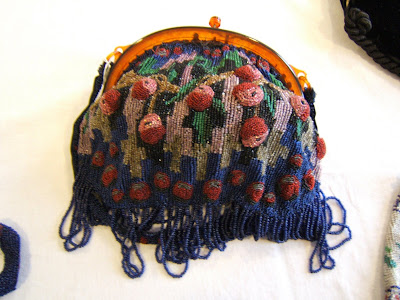Carole Biggs' Langley bag finished, with a nice line of stitching edging the pale insert, and a rather fine beaded tassel in rayon threads.

And some interesting couching on one of the paisley pieces.

The various paisley design pieces were begun in a hands-on stitching session one month. They are using a design from the silk museum's archives. The idea was, rather than having yet one more unfinished sample, to produce some finished blocks which could be combined to make a hanging for some deserving cause. All the paisley pieces members are willing to submit will be on show in the
Celebration of Silk competition and exhibition, not to compete, but just to add interest, being a link with the archive print blocks.
Labels: langley bag, paisley

















